Two days to make a game: Here's what it's actually like to take part in a game jam
All you need is a weekend, a computer and some sort of clue
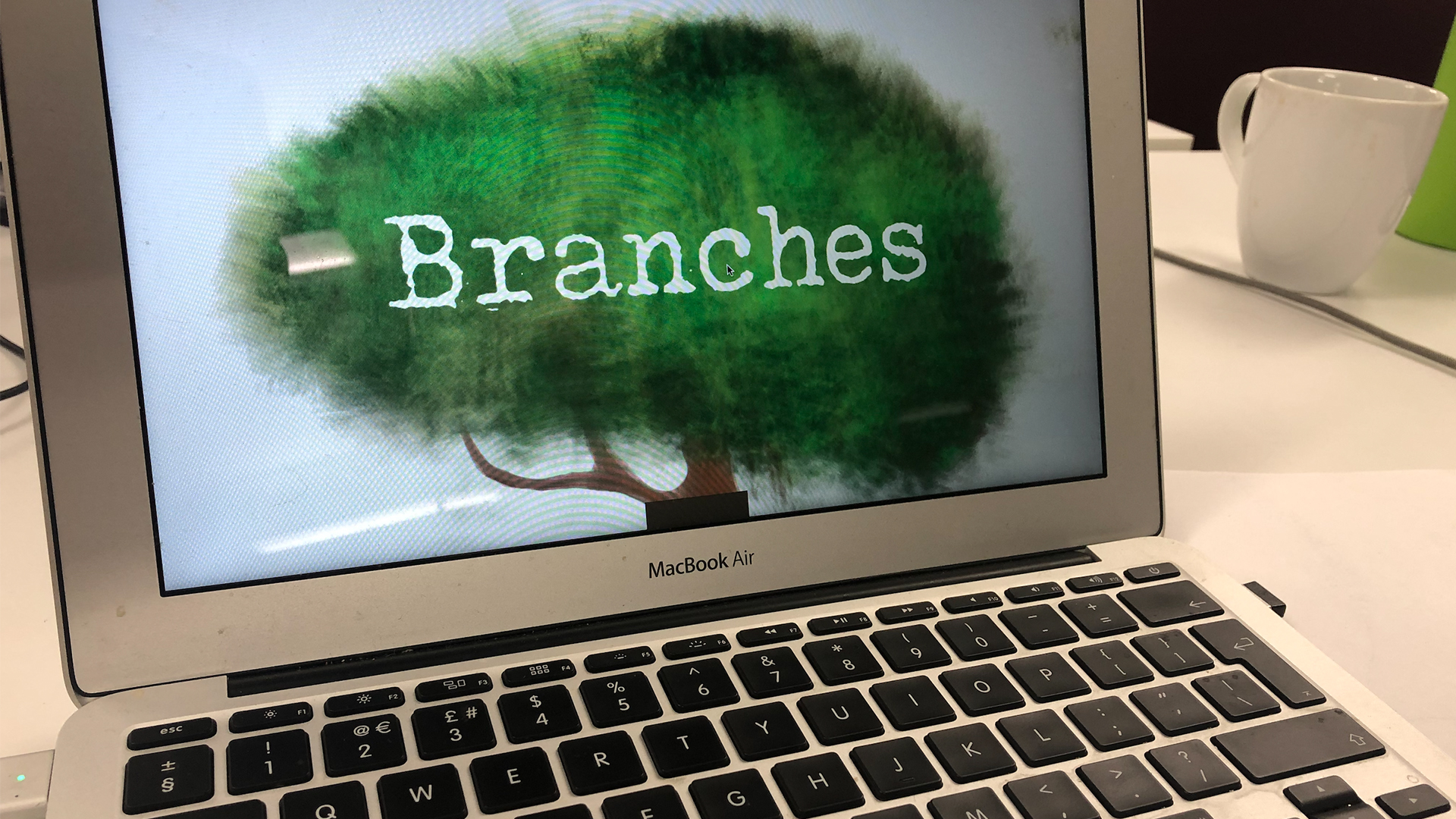
I get about… oooh, five minutes into my first ever game jam before my heart sinks and I think I'm going to fail. The initial idea I'd sketched out – based on teased themes before everything had officially started – doesn't fit the actual final theme. With barely two days to conceptualise and create a game from scratch, 'I got nothing' isn't a great starting point.
If you're not up to speed on the idea of a game jam, it's something developers, who apparently aren't working hard enough already, do for fun: making a game in a restricted amount of time, based on a theme that isn't revealed until a timer starts ticking. Ludum Dare is probably the most famous example, a global game jam that takes place over weekends throughout the year, using a theme voted for by the people taking part. Developers do these things to challenge themselves, show off, and even shake out some new ideas (a bunch of Skyrim DLC famously came from a series of Bethesda in-house jams).
Coding for a cause
However, I'm doing it to promote Alzheimer's Research UK at UKIE headquarters (the UK Interactive Entertainment trade body) with the added twist that, while games journos are making the game, developers are writing about it (day one, two and three covered here). It's all meant to be a bit of cross discipline industry fun to help raise awareness for Alzheimer's research. Except, right at the start, I'm tearing up my plans and wondering how I'm going to fill the next 48 hours.
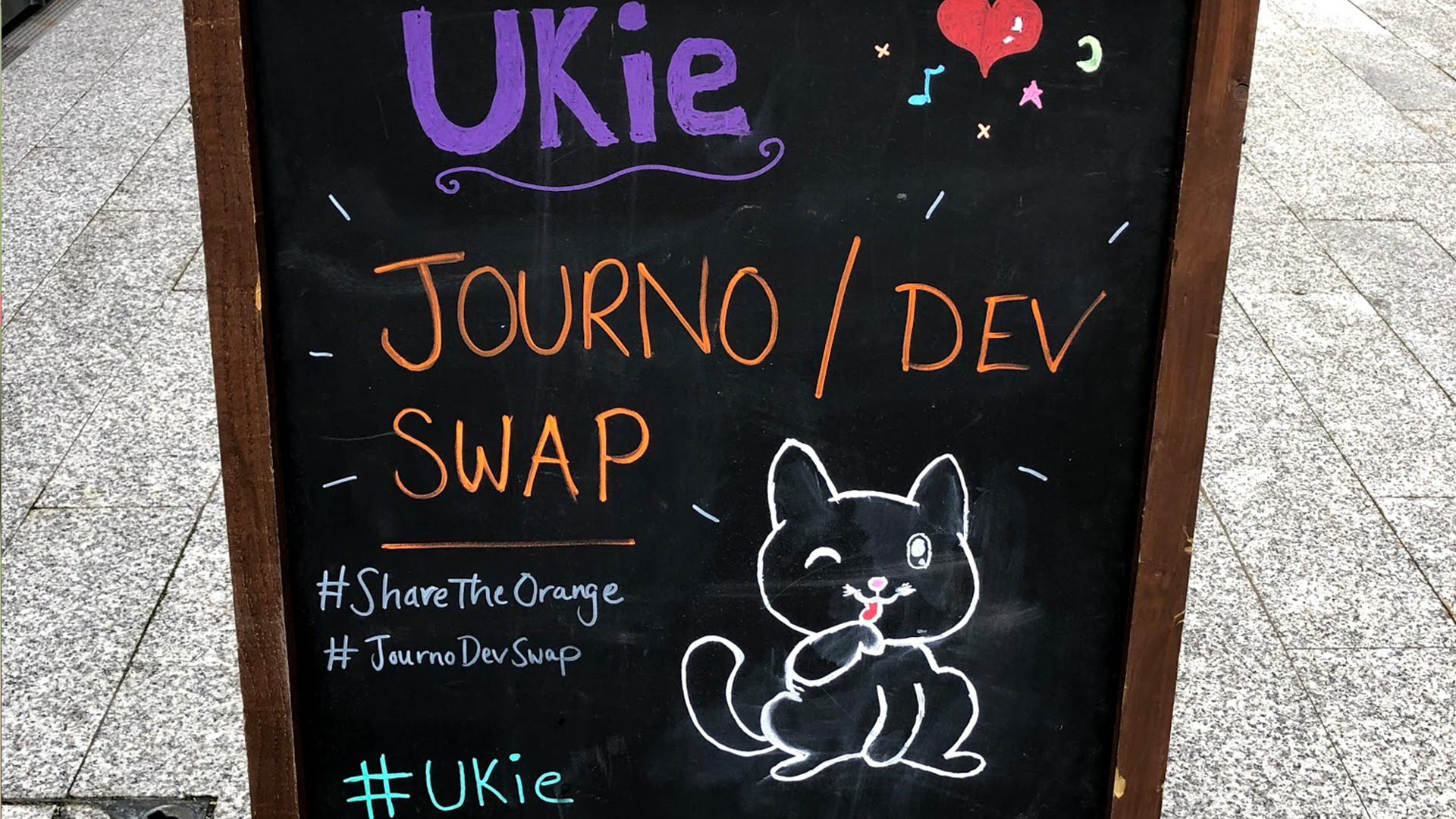
Before the jam had even started, we were given a teaser for the central theme, which implied it would involve "games that explore memory, deep thought, and being inside your own head." Based off that my initial idea was to create an interactive photo album full of blurred out pictures, as well as things like old ticket stubs, dried leaves and other mementoes. Then, by associating the objects with the right pictures, you'd be able to unblur images, uncover clues to match more objects, and work your way through the album, replacing and restoring the memories of someone's life.
It should have been perfect for the teased theme. 'Explore memory?' Totally. 'Being inside your own head?' That's what memories are all about. Easy, I've got this. Then the timer starts and the theme is announced: "The brain".
Well, balls.
For a little while, I stare into the abyss of 'not a fucking clue' as I try to conjure up some sort of brain-related concept that doesn't feel stupid. At one point, the idea of a Katamari Damacy style rolling brain collecting memories trundles past. Yeah, it got that bad. Fortunately, I have two secret weapons to save me which, in order of proximity, are Dan, my game dev student partner, and Samuel L Jackson.
Weekly digests, tales from the communities you love, and more
Share the Orange
You see, part of the new advertising campaign for Alzheimer's Research UK involves Sam Jackson explaining that an Alzheimer's affected brain weighs about 140 grams less than a normal one – the same as an orange – indicating a physical cause and, thus, something that can be cured. Hence the hashtag 'Share the Orange'. While he's explaining all this, a brain-shaped tree full of memories withers as a metaphor for the disease. This is what I'm talking about:
My game dev student partner Dan points out that my photo album idea could be adapted to match the idea of Sam's brain tree, with branches full of memories.
It's a massive relief and, the more I think about it, the more it could work. It's literally riffing off the advertising campaign, and it's keeping in line with one core design tenet I wanted to stick to: keeping things simple. I do some game dev stuff for fun as a hobby in GameMaker Studio 2, which doesn't help me for this Jam's platform of choice, Unity, but it does mean I've some experience knowing what to do and what not to do. I wanted to create something built on simple, easy to reuse gameplay that wouldn't feel repetitive and avoid too much coding. Nothing kills a project faster than a massive list of features, or a hard to program mechanic that takes forever to perfect and then turns out to not really be all that important . Building a game on the idea of matching objects to pictures was perfect: a simple idea, easy to implement, and that makes sense across a whole game. Easy. Now we just have to make it.
Cut content
For the next few hours, Dan and I throw ideas back and forth and scribble arcane diagrams all over huge sheets of paper. The more we can plan out and fix in shape now as an effort-light concept, the less we have to work out/fix while the more work-intensive coding is taking place. A few things become immediately clear: my original design involved an in-depth life story to rebuild. It would've had multiple paths to discover, covering childhood, school, university, marriage, work, middle age, retirement; letting you tell different stories depending on the route you took through the memories, but it's just too big. I only get as far as the 'work' section, and I'm already going to need 40 odd images. Even cutting huge chunks of life stages out (maybe they never went to university?) still leaves far to much art for what amounts to about two days of development over a Friday afternoon, Saturday, and Sunday morning). As Dan sets about coding the mechanic that will let you pick up items and drop them on images, I set about hacking the life story idea to pieces to make it more manageable in the time available.

By the end of Friday we've got a firm plan. The original idea of telling a specific story through pictures has been cut back to basic life beats – birth, school, college, marriage, children, etc. – replacing the need for 80 odd bespoke images, with 14 fairly generic stock photos. It's a pretty accurate representation of game development overall – an initial pitch in meeting one might be 'riding a flaming dream unicorn firing lasers from its horn', but by meeting seven the plan is to make the player walk places and occasionally mention a horse in conversation. At least that way you'll only miss the original release date by a month.

Saturday starts with a clear focus. Dan continues to code the interactions and network between pictures using block art while I finalise the images. The idea we've ended up on is a system of blurring that makes it hard to see what more distant pictures are in the tree, and therefore harder to match an object to it. By matching images, you'll see the blur level reduce, making things easier but at the same time the branches themselves degrade with each move. The idea is that it adds pressure to the challenge while mirroring the progressive nature of Alzheimer's.
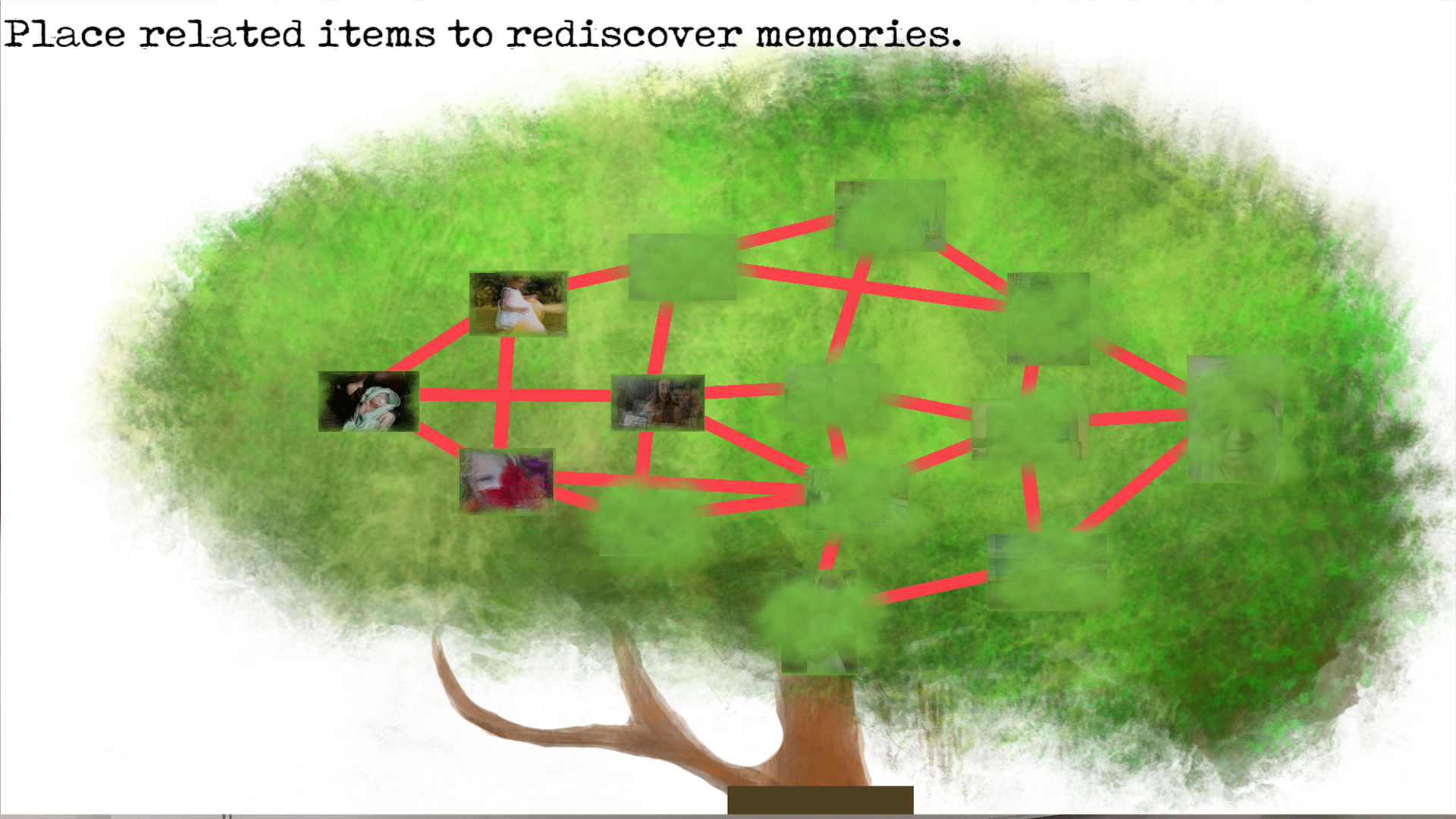
Using stock images for the main story beats is another time-saver. I had, in the mad reckless youth of 'yesterday', planned to draw all the images myself. Telling the story of a specific character with Alzheimer's over their lifetime. But I quickly realised that it was a couple of week's work, not days. So I found royalty-free photos and ran them through an oil painting filter to homogenise them and make them more coherent - limiting the work to drawing individual items from each shot to match up.
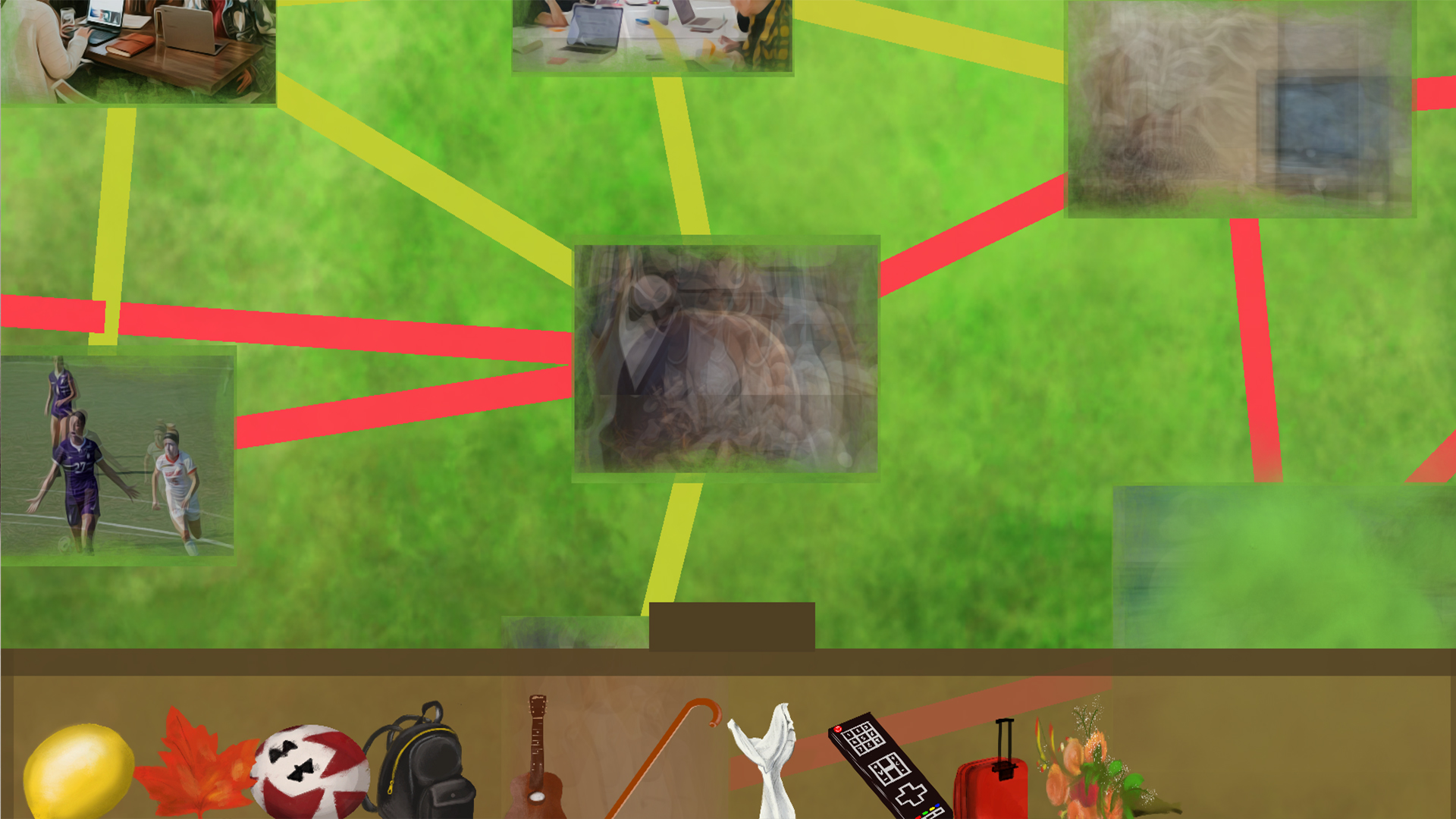
Going gold
While I've been doing that, Dan has coded up the network of interlinked squares you can drop items on that basically make the whole game. While he refines it, I finish all the art and feed it through so he can start to assemble the full network of memories. Much of Saturday is then spent refining the gameplay balance. How much blur should the images start with? How quickly should it decrease as you solve puzzles, what rate should the branches degrade? After Friday’s ‘Alpha’ stage (basically meaning we hadn’t finalised all the features) we are now very firmly in ‘Beta’, which means we’ve added in everything we want it to do, it just need to be tested loads to make sure it works as well as we can make it. The plan is to err on the side of easy so that the judges can see everything (which often happens in real life public demos for real games). The rest of Saturday for me is spent writing music and drawing objects and a tree for the main image that will house the memories, while Dan refines and tests the code as we both test and tweak.
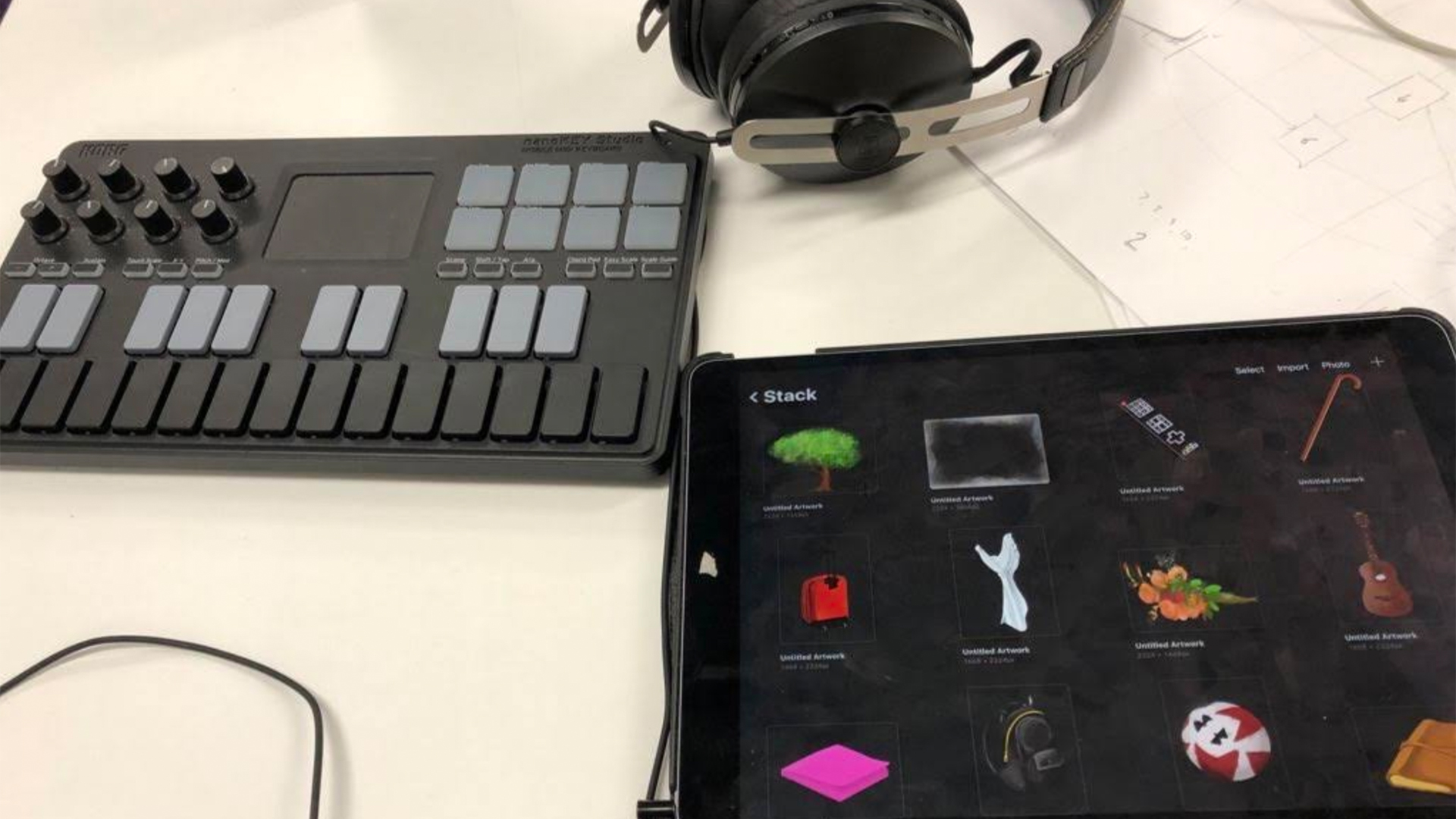
Sunday is all about polish. I think the initial planning, and going for a manageable scale has paid off. Everything's in place and we're just fine tuning things like music and sound levels, balance, difficulty and art. The weirdest part of the day is presenting the final game, now simply called 'Branches', to the judges. Suddenly I'm the other side of the journalist line, answering questions not asking them, and distilling the project into catchy buzzwords and sales pitch sentences. By the third presentation, I've boiled it down to a tight pater (I think) that hits all the points we want to cover: blah blah, recovering memories, dum de dum, degrading pathways mirroring the real life progress of the disease, yadda yadda, complete the game to find the person suffering from the disease, etc, etc. Having seen plenty of video game presentations in the past, sometimes repeatedly over various events, it’s interesting to see how the dialogue evolves over time from this side. By the sixth presentation I can roll off the whole spiel like a finely rehearsed play.
Then there's nothing to do but wait. At which point all the competitors wander around looking each other's games until it's time for the results. We… didn't win but it was close. Apparently we were second, with one vote in it. The judges wanted to give two first places, but there were only enough trophies for one team. Ah well, it was still and amazing experience: a weird rush of a weekend, creating a game though doubts and second guesses felt oddly triumphant by the end. The main takeaway overall has been how important fixing a clear idea and scope at the start was. For all the love of clever mechanics, visuals, and high brow writing, the most important part of the whole deal has been the far less sexy element of project management. The original ideas myself and Dan worked up weren't impossible – they were just impossible in the time we were allocated. By stripping some of the fluff and width back to core ideas, we made a playable concept that demonstrated what was possible from the original idea. That's the same whether it's a two person indie game, or a multi-studio triple 'A' mainstream giant - you rarely get the game a studio wanted to make, you get the game they could make in the time available. And if you want to see what myself and Dan could make, in weekend, you can check it out here.

I'm GamesRadar's Managing Editor for guides, which means I run GamesRadar's guides and tips content. I also write reviews, previews and features, largely about horror, action adventure, FPS and open world games. I previously worked on Kotaku, and the Official PlayStation Magazine and website.


